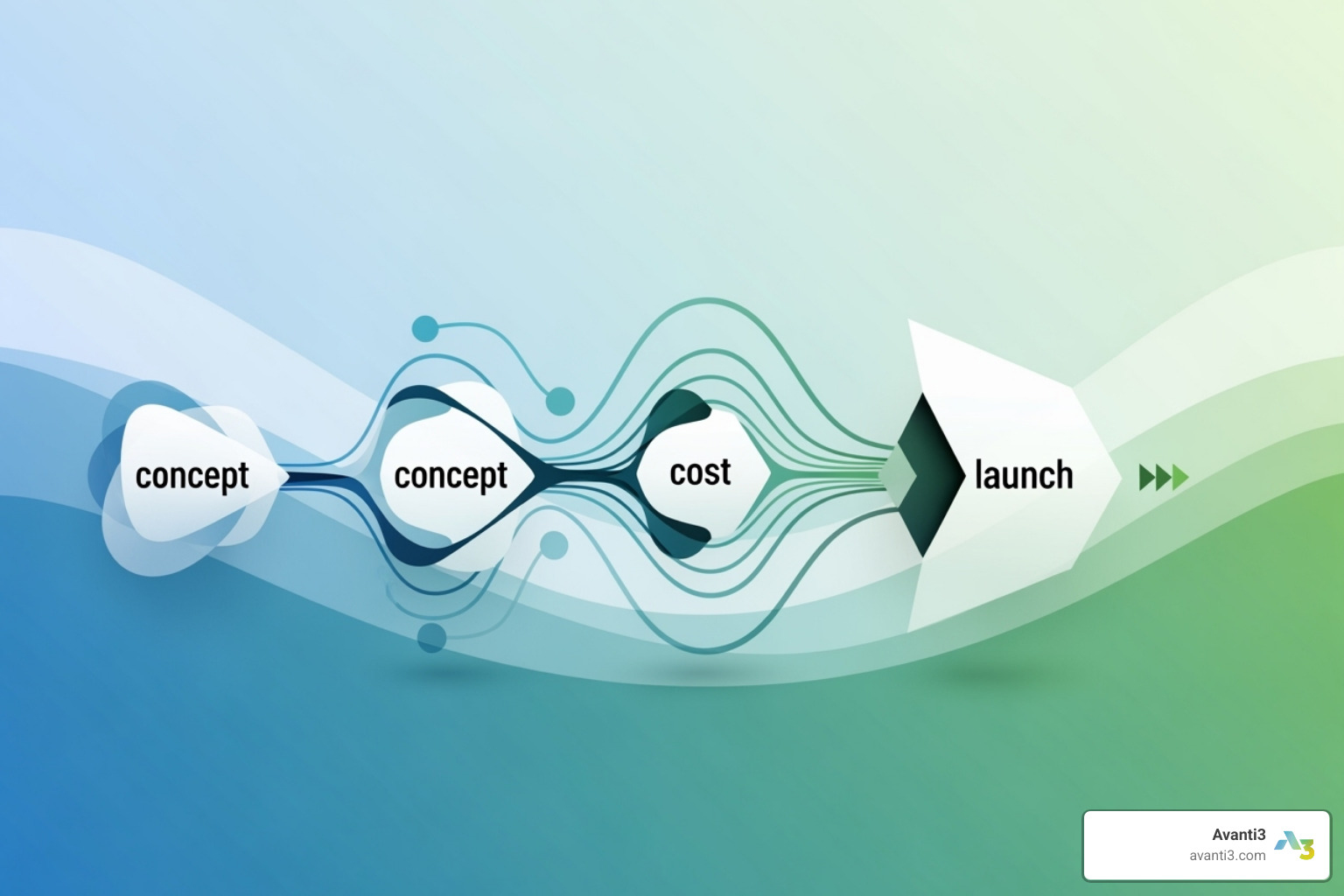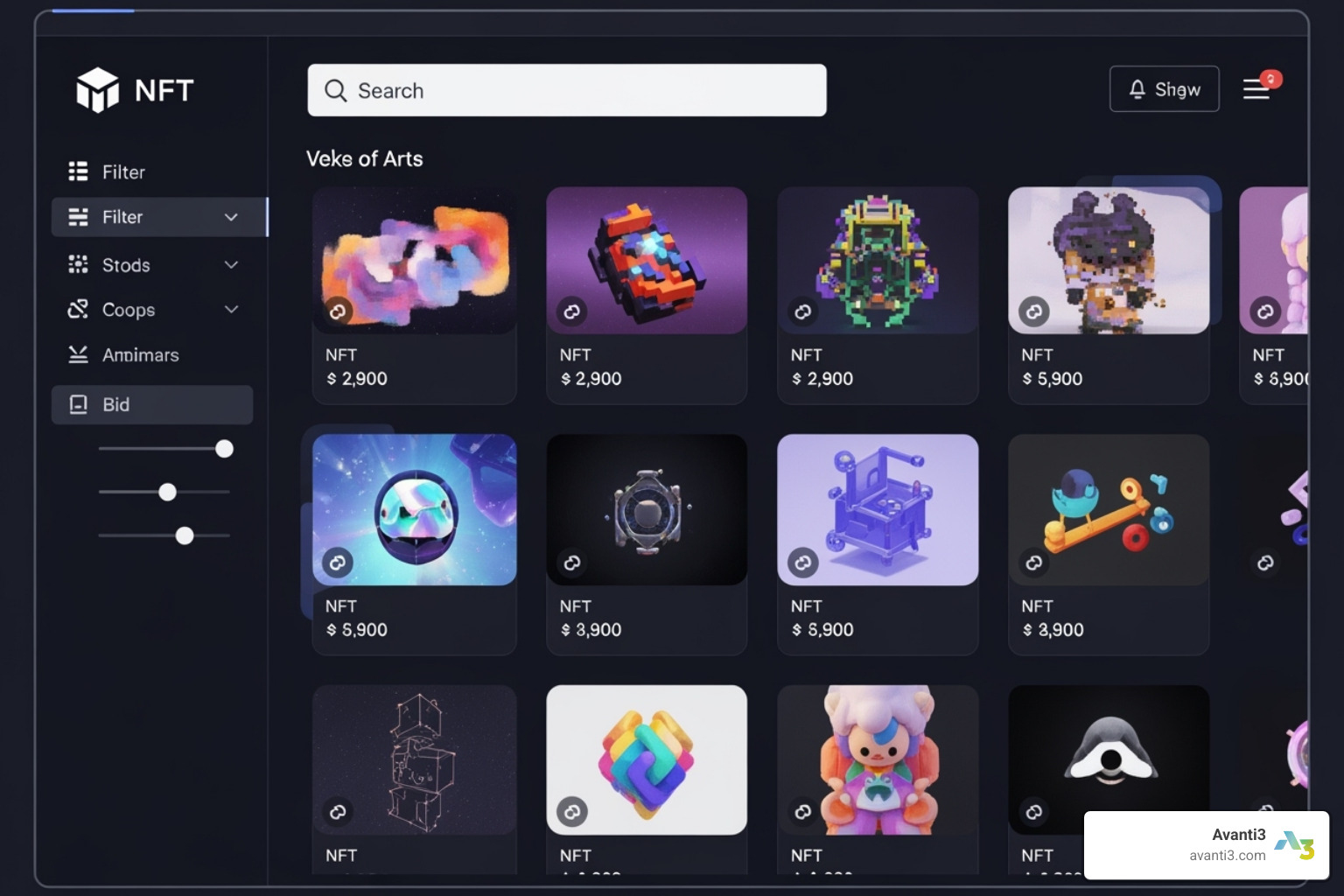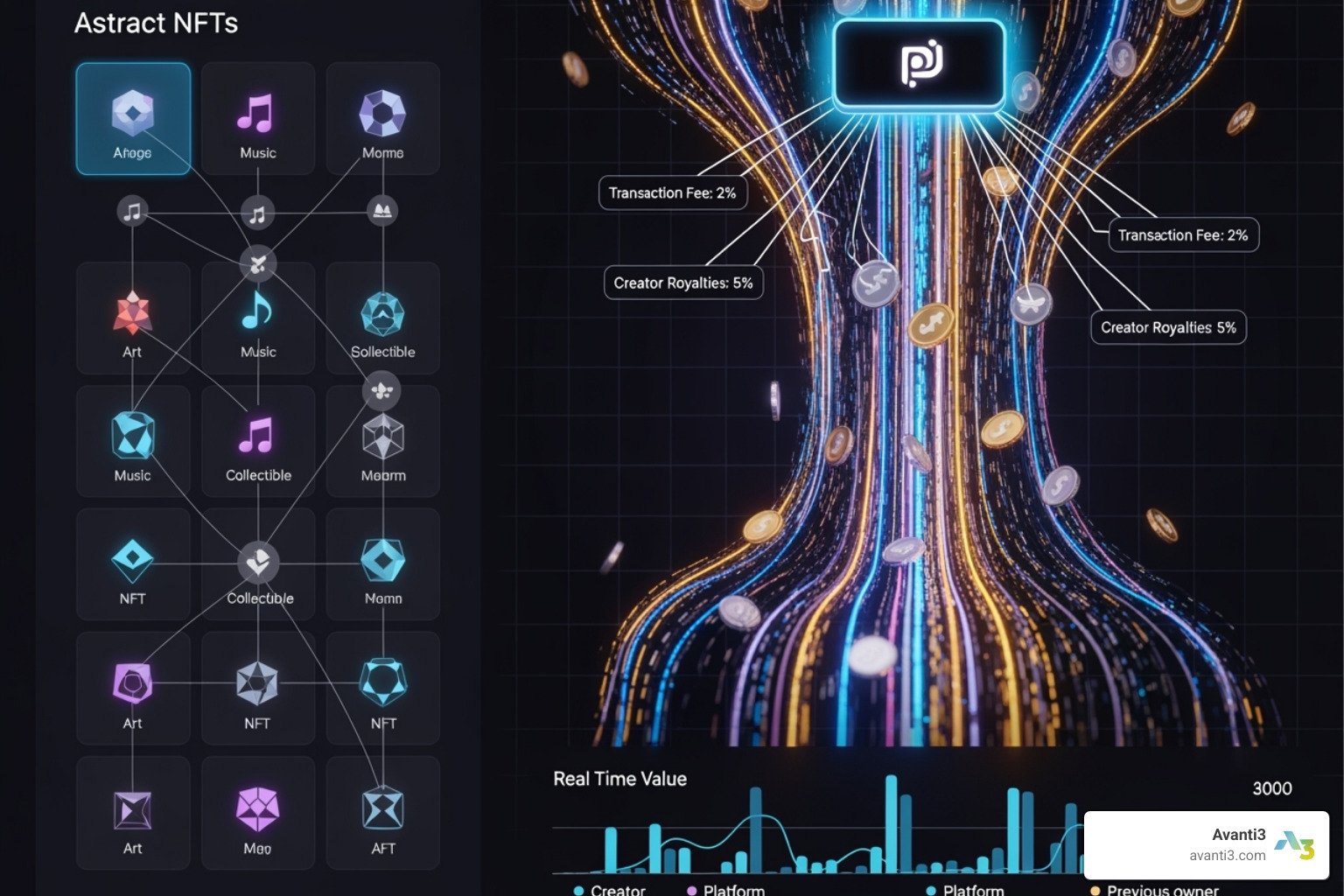Cost to build an nft marketplace 2025: Smart
Is Building an NFT Marketplace Still a Smart Move?
The cost to build an nft marketplace typically ranges from $50,000 to $500,000, but can start as low as $10,000 for a white-label solution or exceed $500,000 for an enterprise-level platform. Despite market volatility, the fundamentals remain strong. With projected revenue hitting US$3.369 billion by 2028 and major brands like Starbucks and Nike launching successful NFT initiatives, the opportunity for engaging audiences is significant.
However, the initial development cost is just the start. Ongoing expenses for maintenance, legal compliance, and community management can add 30-50 % to your total investment in the first year. The key question isn’t if NFT marketplaces are viable, but whether you have a clear monetization strategy and understand the full investment scope.
At Avanti3, our team has helped numerous brands steer Web3 adoption. This guide will walk you through the true cost to build an nft marketplace so you can make an informed decision.
Understanding the Investment
The NFT market, valued at over $41 billion, represents a foundational shift in digital ownership. NFTs offer unparalleled transparency through unique signatures on the blockchain, making an NFT marketplace a worthy investment for empowering creators and boosting digital brand engagement.
The market is projected to reach 16.35 million users by 2028, fueling a creator economy where artists, musicians, and gamers find new ways to monetize their work. At its core, an NFT marketplace is a Web3 application that facilitates these transactions through a blockchain, smart contracts, digital wallets, and an intuitive user interface.

Building such a platform requires a significant upfront investment in development and user experience. This initial cost must be weighed against the potential ROI from various revenue streams. The goal is to build a platform that fosters loyalty and becomes a profitable venture.
What Drives the Cost to Build an NFT Marketplace?
Understanding the cost to build an nft marketplace depends on several key factors that shape your platform.

Think of these cost drivers like ingredients: your development approach is the recipe base, feature complexity determines the number of ingredients, blockchain integration is your cooking method, team composition is your chef, and security audits are your quality control. Let’s break down each element.
Development Approaches and Team Costs
Selecting a build strategy—custom development, white-label solutions, SaaS platforms, or open-source code—has the biggest impact on both budget and timeline. Developer salaries also vary widely by region; recent statistics on global engineer pay show rates ranging from about $35 per hour in Eastern Europe to $100+ in the United States. At Avanti3, we help clients balance cost, functionality, and speed for their Web3 creator platforms.
| Development Approach | Cost Range | Time-to-Market | Customization Level |
|---|---|---|---|
| Custom Development | $50,000 – $500,000+ | 3–6+ Months | Unlimited |
| White-Label | $10,000 – $75,000 | 1–2 Months | High (within limits) |
| SaaS Platform | $10,000+ (plus monthly) | Weeks | Limited |
| Open-Source | Varies (high dev cost) | Varies | High (requires skill) |
Custom development offers unlimited control and unique features but is the most expensive and time-consuming option, ideal for visionary projects. White-label solutions provide a faster, more affordable middle ground by letting you rebrand a pre-built platform. SaaS platforms are the quickest entry point—essentially renting a ready-made marketplace with limited control—making them suitable for testing an idea. Open-source code may seem free, but it requires significant developer investment to adapt, secure, and maintain.
The Feature Set: From Basic to Advanced

Essential (Must-Have) Features:
- Storefront: A digital display for NFT details, history, and pricing.
- Search & Filtering: Crucial for user experience and can boost conversions.
- Wallet Integration: Secure connection to wallets like MetaMask.
- Minting Process: Allows creators to turn digital files into NFTs.
- Buying & Auction System: Core functionality for transactions and bidding.
- User Profiles & Authentication: For managing user accounts and assets.
- Ratings & Reviews: Builds trust and confidence in the platform.
Advanced (Value-Add) Features:
- Analytics Dashboards: Provides insights for creators and traders.
- AML/KYC Integrations: Ensures regulatory compliance.
- Cross-Chain Compatibility: Allows trading NFTs from different blockchains.
- Gamification: Boosts user engagement with rewards and badges.
- DeFi Integrations: Connects to decentralized finance for lending or staking.
- AI-Powered Features: Can assist with art generation or market analysis by leveraging AI tools for creators.
While a basic feature set might total $15,000 – $30,000, each advanced feature can add $20,000 – $50,000 or more. Prioritizing features that align with your business goals is essential.
The Blockchain Backbone: Smart Contracts and Integration
Your choice of blockchain is the foundation of your marketplace, impacting development costs and operational expenses.
Ethereum is the most popular choice with a large user base, but it comes with high gas fees (often $70 – $500 per mint) and development costs that can reach $50,000. Alternatives like Solana and Polygon offer much lower fees (as low as $0.01) and faster transactions, making them attractive options. Other viable blockchains include Binance Smart Chain, Flow, Cardano, and Tezos.
Smart contract development costs vary with complexity, from $5,000-$15,000 for basic minting to over $25,000 for advanced features like royalty distribution. Security audits are non-negotiable, typically costing $5,000-$15,000 to protect your platform and users from vulnerabilities. This is where expertise in blockchain art authentication is invaluable.
Your choice of token standards also matters. ERC-721 is for unique, one-of-a-kind NFTs, while ERC-1155 is better for collections with multiple identical items, as outlined in this comparison of ERC-721 vs. ERC-1155 standards. We help clients select the right technology to balance cost, function, and scalability.
Beyond the Build: Ongoing and Hidden Expenses
Many entrepreneurs overlook the substantial costs lurking beneath the surface: platform maintenance, server hosting, marketing, legal compliance, and community management. Understanding these is key to building a sustainable business that can weather the volatile NFT market.
The True Ongoing Cost of an NFT Marketplace
The moment you go live, the real expenses begin. Your platform needs constant care to stay competitive and secure.
- Platform Updates & Maintenance: Bug fixes, performance tuning, and feature updates can cost $10,000-$20,000 annually.
- Server Hosting & Infrastructure: A reliable UI, search functions, and off-chain data require robust servers, typically around $10,000 per year for a modest platform.
- Third-Party API Fees: Services for payments, analytics, or blockchain data can range from $2,000-$10,000 annually, depending on usage.
- Security & Audits: Budget about $10,000 per year for ongoing monitoring, patches, and periodic audits to stay ahead of hackers.
- Customer Support: As your user base grows, timely assistance for technical issues and user questions becomes a significant investment.
At Avanti3, our expertise in community building platforms ensures your marketplace thrives long-term with proper planning for these ongoing costs.
Monetization Models and Hidden Expenses

Common revenue models include transaction fees (1–5 % of sales), listing fees, and royalty systems that give creators a cut of secondary sales. Platforms can also charge for promoted listings or introduce governance tokens to open up additional value.
However, be aware of hidden expenses:
- Legal & Compliance: Initial costs can be $5,000-$10,000, with ongoing fees as regulations evolve.
- Marketing & Promotion: A substantial budget—often $50,000-$200,000 in the first year—is needed to attract users.
- Scope Creep: Unplanned changes during development can inflate budgets by 30-50 %.
- Scalability Costs: Success brings higher infrastructure costs to support a growing user base.
Our NFT marketplace development approach at Avanti3 addresses these challenges head-on, helping you build a comprehensive business strategy for long-term growth.






